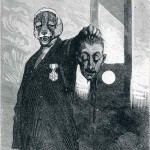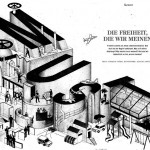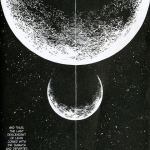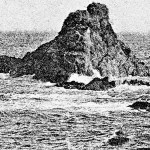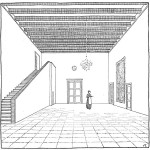

Claude Bragdon: Drawings of the Fourth Dimension (1913-1915)
source link: https://socks-studio.com/2022/10/23/claude-bragdon-drawings/
Go to the source link to view the article. You can view the picture content, updated content and better typesetting reading experience. If the link is broken, please click the button below to view the snapshot at that time.

Claude Bragdon: Drawings of the Fourth Dimension (1913-1915)
October 23, 2022 by Fosco Lucarelli Leave a Comment
American architect Claude Fayette Bragdon (1866-1946) was also an artist, writer and stage designer. He was based in Rochester, NY where he built his masterpiece, the New York Central Railroad Station in 1909. His design work and philosophy were influenced mainly by theosophy, a form of esoterism that preached the soul’s spiritual emancipation. Bragdon wrote architectural theory texts influenced by his spiritual beliefs and technological discoveries like the x-ray vision.
An extremely skilled draftsman, Bragdon associated his texts with complex illustrations in pen and ink inspired by Japanese drawings with an emphasis on a balanced composition and on the relevance of lines. His texts fostered a vision of projective and fourth-dimension geometry as tools able to reach beyond the limits of the three-dimensional world and outside the mental constraints of human perception.
We can never see, for instance four-dimensional pictures with our bodily eyes, but we can with our mental and inner eye.
In A primer of higher space (1913) he attempted to provide a visual representation of the fourth dimension through two-dimensional projective drawings. In 1915, he published Projective Ornament, an essay focusing on ornament as a capital subject for the development of modern architecture, following Louis Sullivan’s research. Bragdon proposed an ornament derived from the two-dimensional projections of the fourth-dimensional space. A series of decorative patterns appear from folded-down axonometric representations of four-dimensional figures.
Following is a selection of illustrations from these two books.












Check out the research work by Jonathan Massey, author of Crystal and Arabesque, Claude Bragdon, Ornament, and Modern Architecture (University of Pittsburgh Press, 2009) and of a series of articles on the architect.
Related Posts
-
Max Ernst, drawings
A selection of drawings by a Dada and Surrealism movement pioneer. A lot more works…
-
Axonometric Drawings by Icinori
Icinori is a duo based in France, formed by illustrators and graphic designers Raphael Urwiller and…
-
Osamu Tezuka B/W Phoenix drawings
Phoenix (火の鳥 Hi no Tori) is a manga series by Osamu Tezuka. Tezuka considered Phoenix…
-
Thomas Barbey's Rotring Cliffs Drawings (2014)
Our dear friend artist and gardener Thomas Barbey, based in Villerville, Normandy (France) and not…
-
A Collection of Tessenow's Interiors Drawings
Tessenow's drawings are immediatly recognizable for being straightforward and yet precise in the description of a…
Recommend
About Joyk
Aggregate valuable and interesting links.
Joyk means Joy of geeK
